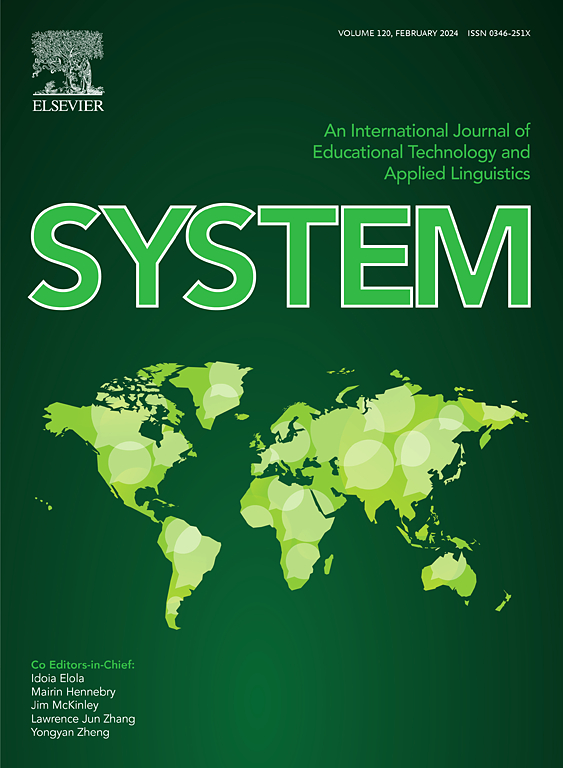延迟多模态输入增强第二语言听力和快速语音适应:一个预测编码的观点
IF 5.6
1区 文学
Q1 EDUCATION & EDUCATIONAL RESEARCH
引用次数: 0
摘要
对于那些发现阅读比听力容易,并且努力跟上母语人士的速度的学习者来说,强调将声音与书面单词联系起来并适应语速的听力练习是必不可少的。本研究探讨了延迟多模态呈现的影响,这是一种暂时分离阅读和听力的输入法。与同时输入(例如,边听边读)不同,这种顺序方法通过防止注意力分裂来减少认知负荷,并通过利用来自另一种模式的先验信息来促进听觉解码。包括对照组在内的99名日本英语学习者在以下四种条件之一下进行了为期5天的结构化练习:(1)只有正常速率的音频,(2)只有快速速率的音频,(3)文字阅读后是正常速率的音频,或(4)文字阅读后是快速速率的音频。五天练习后的后测结果表明,与只听录音的情况相比,录音辅助听力——尤其是在快速听力之后——在听力熟练程度和对快速言语的适应方面都有了更大的提高。这些发现表明,延迟多模态输入增强了预测编码——大脑基于先验知识推断输入信息的机制——并支持意义检索的巩固。通过这样的练习,学习者可以形成音意合一的表征,最终提高听力水平。本文章由计算机程序翻译,如有差异,请以英文原文为准。
Deferred multimodal input enhances L2 listening and fast-speech adaptation: A predictive coding perspective
For learners who find reading easier than listening and struggle to keep up with the speed of native speakers, listening practice that emphasizes linking sounds to written words and adapting to speech rate is essential. This study investigates the effects of deferred multimodal presentation, an input method that temporally separates reading and listening. Unlike simultaneous input (e.g., reading-while-listening), this sequential approach reduces cognitive load by preventing split attention and facilitates auditory decoding by leveraging prior information from another modality. Ninety-nine Japanese EFL learners, including a control group, engaged in five days of structured practice under one of four conditions: (1) normal-rate audio only, (2) fast-rate audio only, (3) transcript reading followed by normal-rate audio, or (4) transcript reading followed by fast-rate audio. Posttest results after the five-day practice sessions showed that transcript-supported listening—particularly when followed by fast-rate audio—led to greater improvements in both listening proficiency and adaptation to fast speech compared to audio-only conditions. These findings suggest that deferred multimodal input enhances predictive coding—the brain's mechanism for inferring incoming information based on prior knowledge—and supports the consolidation of meaning retrieval. Through such practice, learners can form sound–meaning integrated representations, ultimately improving their listening proficiency.
求助全文
通过发布文献求助,成功后即可免费获取论文全文。
去求助
来源期刊

System
Multiple-
CiteScore
8.80
自引率
8.30%
发文量
202
审稿时长
64 days
期刊介绍:
This international journal is devoted to the applications of educational technology and applied linguistics to problems of foreign language teaching and learning. Attention is paid to all languages and to problems associated with the study and teaching of English as a second or foreign language. The journal serves as a vehicle of expression for colleagues in developing countries. System prefers its contributors to provide articles which have a sound theoretical base with a visible practical application which can be generalized. The review section may take up works of a more theoretical nature to broaden the background.
 求助内容:
求助内容: 应助结果提醒方式:
应助结果提醒方式:


